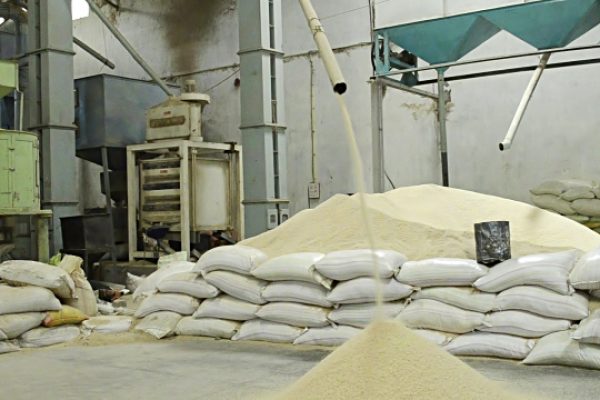Project Report For Rice Mill
Introduction
Project Report For Rice Mill is as follows.
A rice mill is a unique building created for the purpose of processing and milling rice grains to create different rice-based goods. It is essential to the process of turning raw paddy rice into edible rice that may be eaten by people or used as a component in a variety of recipes. The washing and grading of the raw paddy rice is the first step in the process at a rice mill. Impurities like stones, dust, chaff, and other foreign particles must be removed in order to do this.
To assure the removal of undesired contaminants, cleaning is often performed using equipment fitted with sieves, aspirators, and magnetic separators. The paddy rice is cleaned before being subjected to the dehusking or hulling procedure. The outer husk is removed during this operation, exposing the brown or rough rice underneath. Depending on the equipment being used, dehusking can be done using a variety of techniques such rubber rollers, abrasive surfaces, or mechanical friction.
The brown rice is then separated from the leftover husk, bran, and germ layers. Whitening machines use friction or abrasion to remove the outer layers and create polished white rice during this process, which is also known as whitening. The separated bran, germ, and other byproducts can be processed further for further applications like the production of bran oil or animal feed. The polished rice goes through grading and sorting after being whitened.
Based on factors including size, shape, and quality, the rice grains are separated in this procedure. In order to produce high-quality finished goods, modern rice mills use sophisticated machinery and optical sorting systems that can identify and eliminate damaged grains, discoloured grains, or foreign contaminants.

Types Of Rice Mill
Traditional Rice Mills: These mills are generally small-scale and use traditional processes and equipment. They may include manual labour or simple machinery such as a mortar and pestle, hand-operated rice hullers, or small-scale milling machines. Traditional rice mills are typically found in rural regions and may have low processing capability.
Modern Rice Mills: Modern rice mills are completely automated and outfitted with cutting-edge gear and technology. They feature large processing capacity and combine various phases of rice processing, such as washing, dehusking, whitening, grading, sorting, and packing. To produce efficient and high-quality rice, modern rice mills employ a variety of devices such as paddy separators, dehuskers, polishers, sorters, and packing systems. They frequently have computerised controls and monitoring systems for accurate operation and quality control.
Parboiling Rice Mills: Parboiling rice mills specialise in the parboiling process, which entails soaking paddy rice, steaming it, and then drying it before milling. Parboiling aids in the gelatinization of starch and increases the nutritional value of rice. These mills often have specific machinery for soaking, heating, and drying the paddy before it is milled.
Integrated Rice Mills: Integrated mills include all steps of rice processing, from paddy procurement to milling, packaging, and distribution. They may include facilities for paddy storage, cleaning, drying, husking, polishing, grading, sorting, and packing. Integrated mills provide a more simplified approach to rice production, allowing for improved quality control, increased efficiency, and lower transportation costs.
Market Potential Of Rice Mill
The market for rice milling, which was valued at USD 1.14 billion in 2019, is expected to increase at a CAGR of 4.13% from 2020 to 2027 to reach USD 1.57 billion.
The main factors impacting the growth of the rice milling industry are the rising levels of production and demand for rice throughout the world. The expansion of the rice milling market has also been supported by the expansion of agriculture, industrialisation, an increase in end-user applications, and technological advancement.
The ability to use rice milling machines to handle paddy to produce rice has raised its demand in agriculture. The market is comprehensively evaluated in the study on the global rice milling industry. The research provides in-depth analysis of the market’s major segments, trends, drivers, constraints, competitive environment, and other elements.
A rice milling machine is a type of food processing equipment that converts paddy into rice. Before the procedure begins, paddy is gathered from the fields and rechecked. The rice product is obtained from paddy fields, milled and hygienically processed in dust-free technology, and cleaned utilising sorting machines. This rice is then sold to end consumers in the market.
